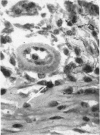Abstract
Delayed hypersensitivity to tuberculin and contact sensitivity to picryl chloride were transferred passively to normal guinea pigs by the intravenous injection of spleen, lymph node and peripheral blood mononuclear cells labelled in vitro with 51Cr or in vivo with 32P or 3H-thymidine. No significant difference was found between the number of injected cells arriving at the passive lesions and actively induced lesions in controls, after 24 hours. The proportion of labelled cells in the exudate was the same as that in the peripheral blood and they showed a random distribution throughout the lesion.
The fate of labelled cells in the body was followed, especially their role of elimination from the lungs and peripheral blood.
It was concluded that no special affinity of the transferred cells for antigen could be demonstrated after 24 hours.
Full text
PDF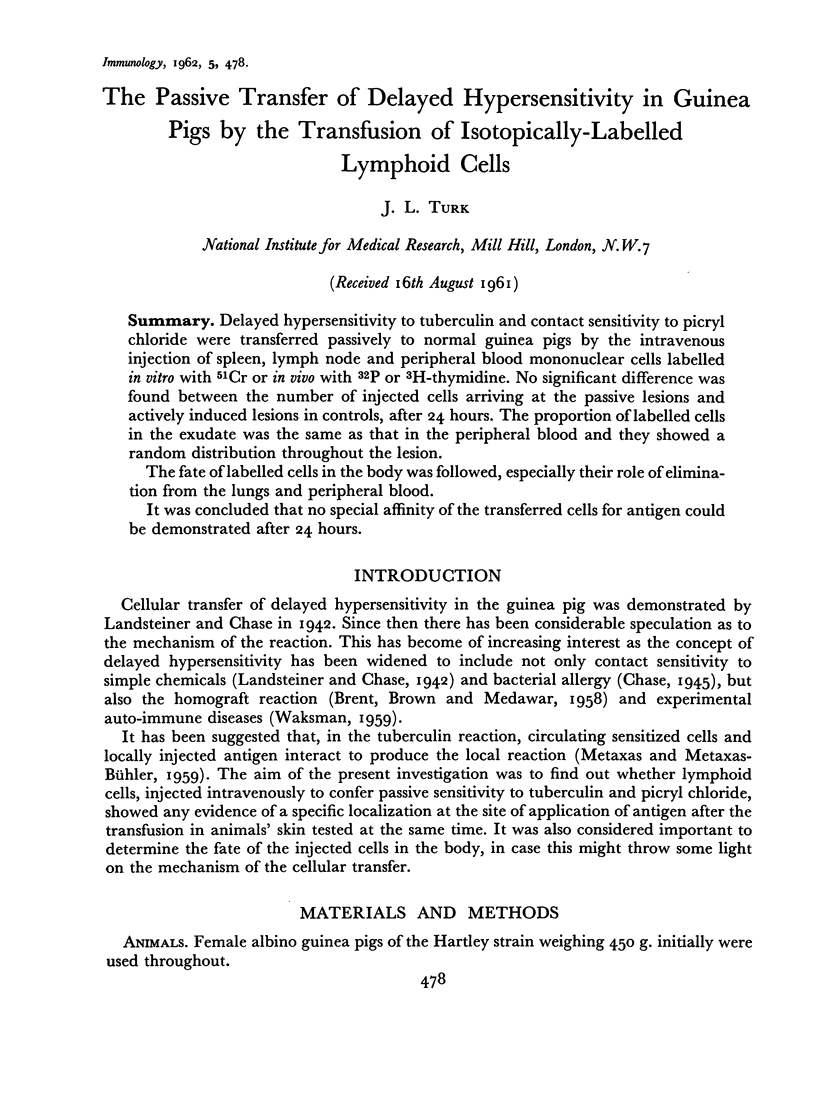
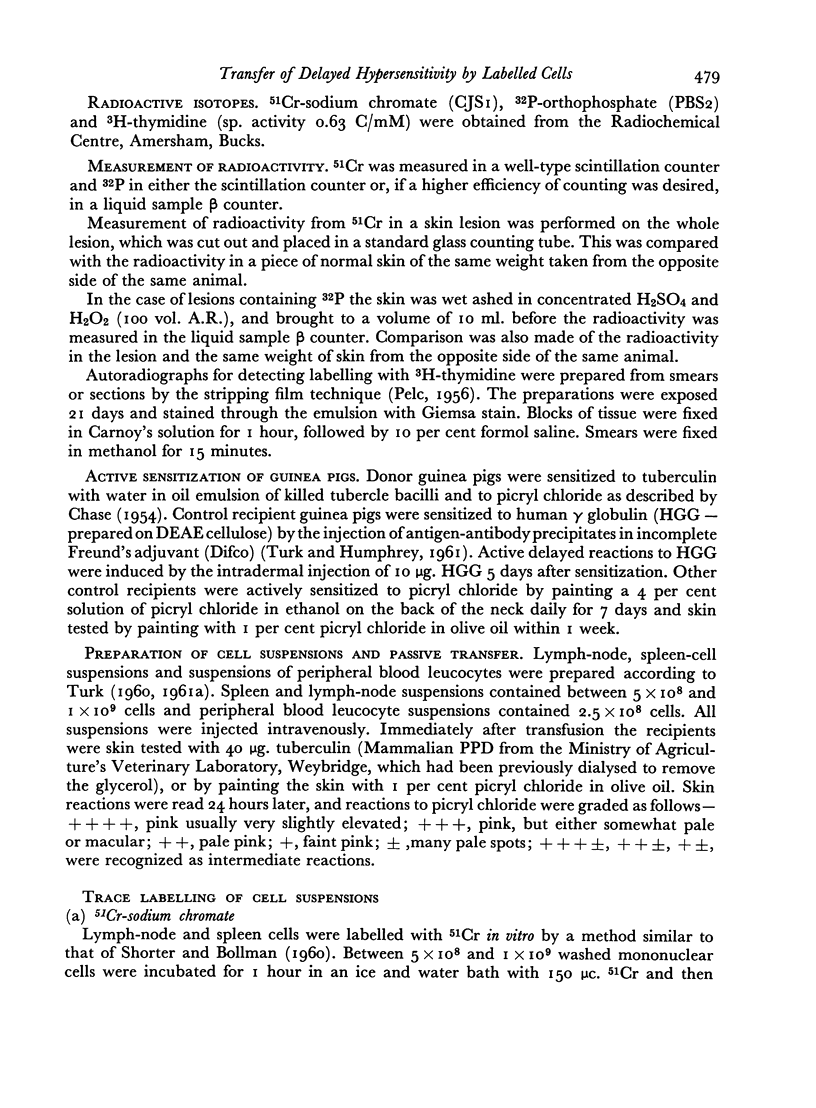
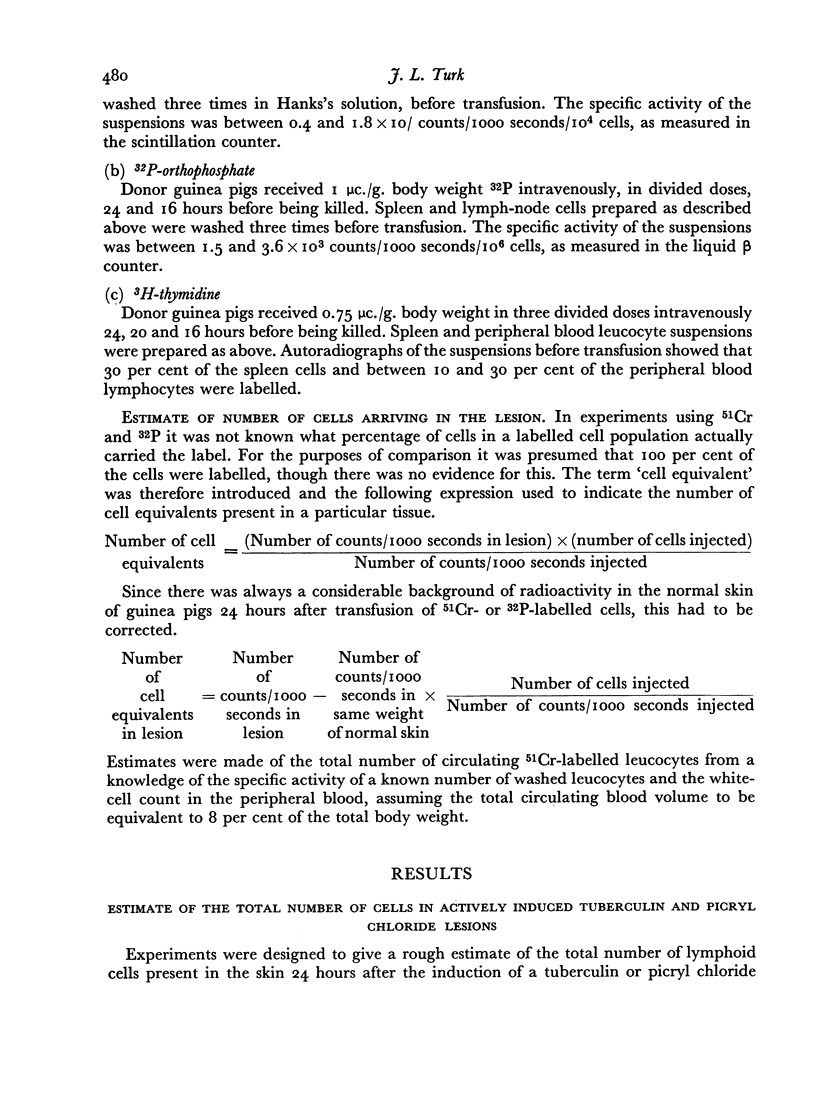
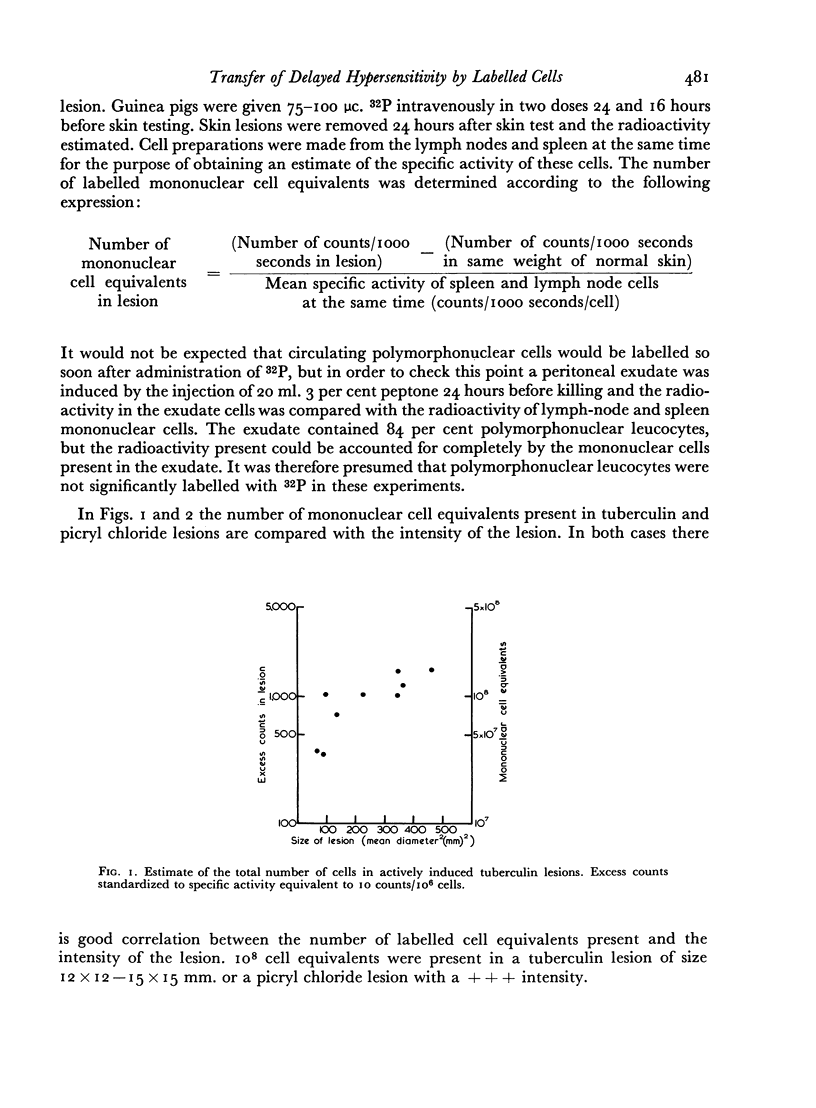
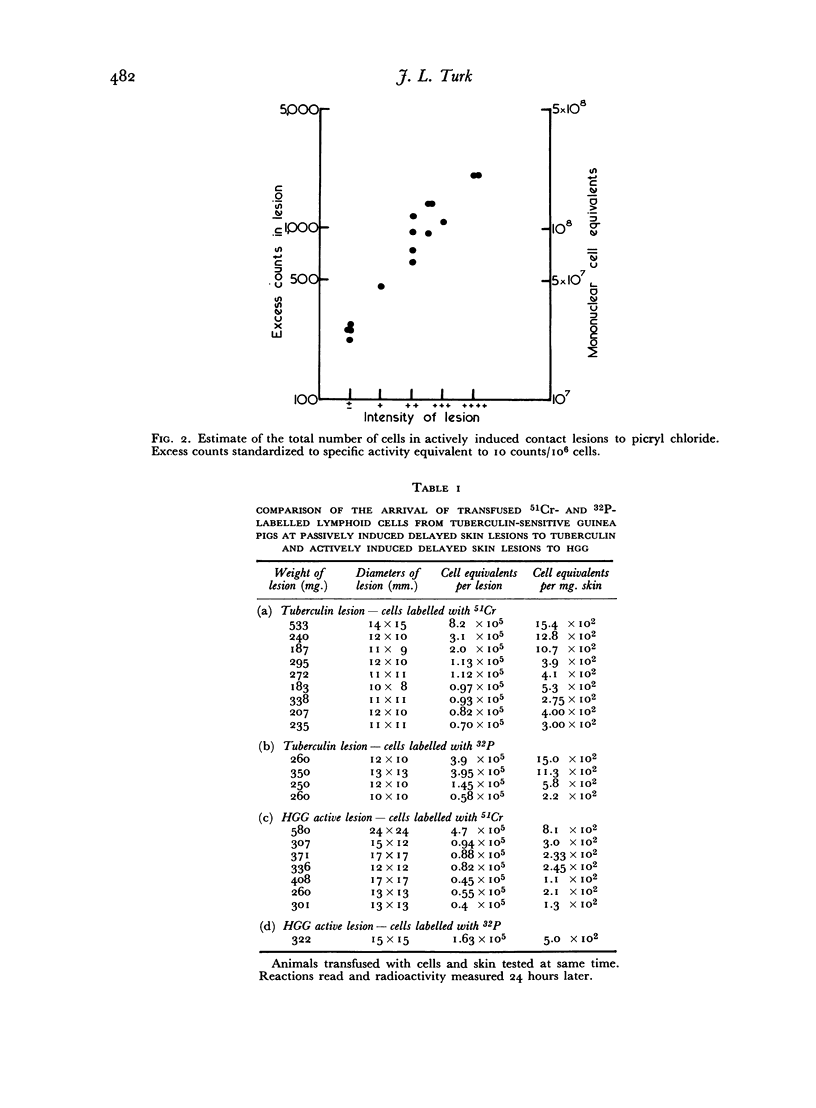
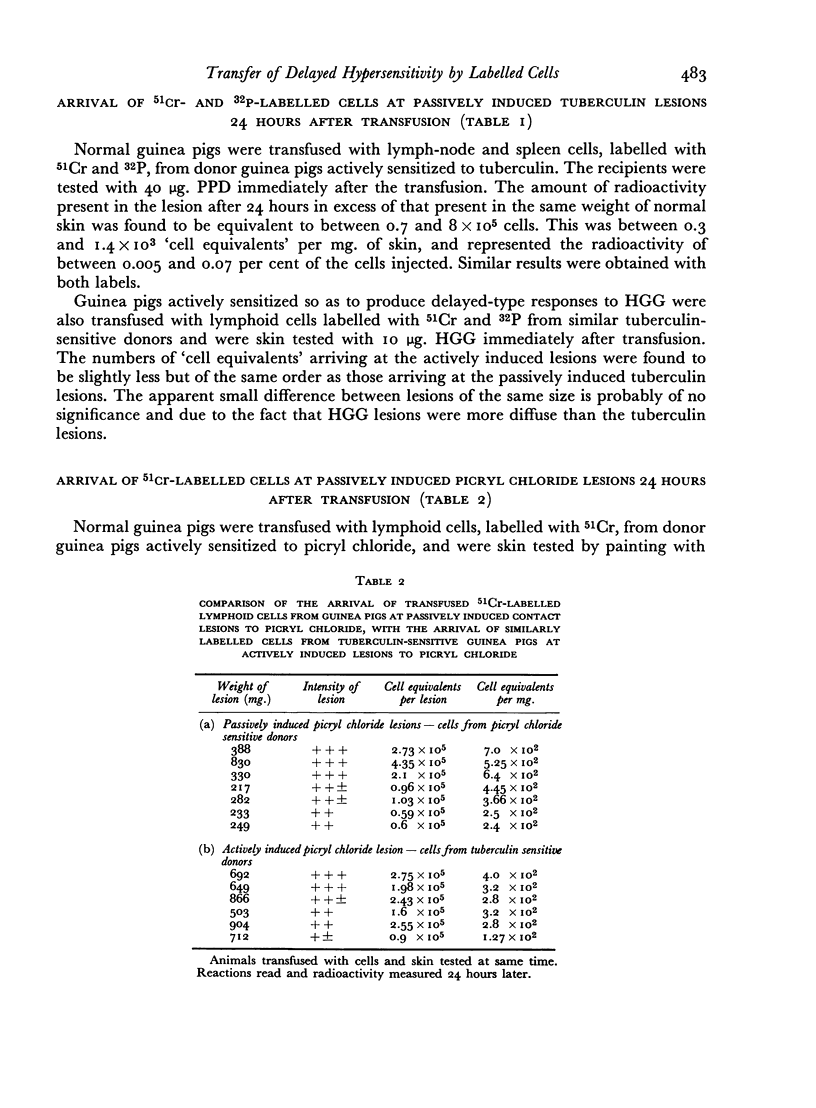
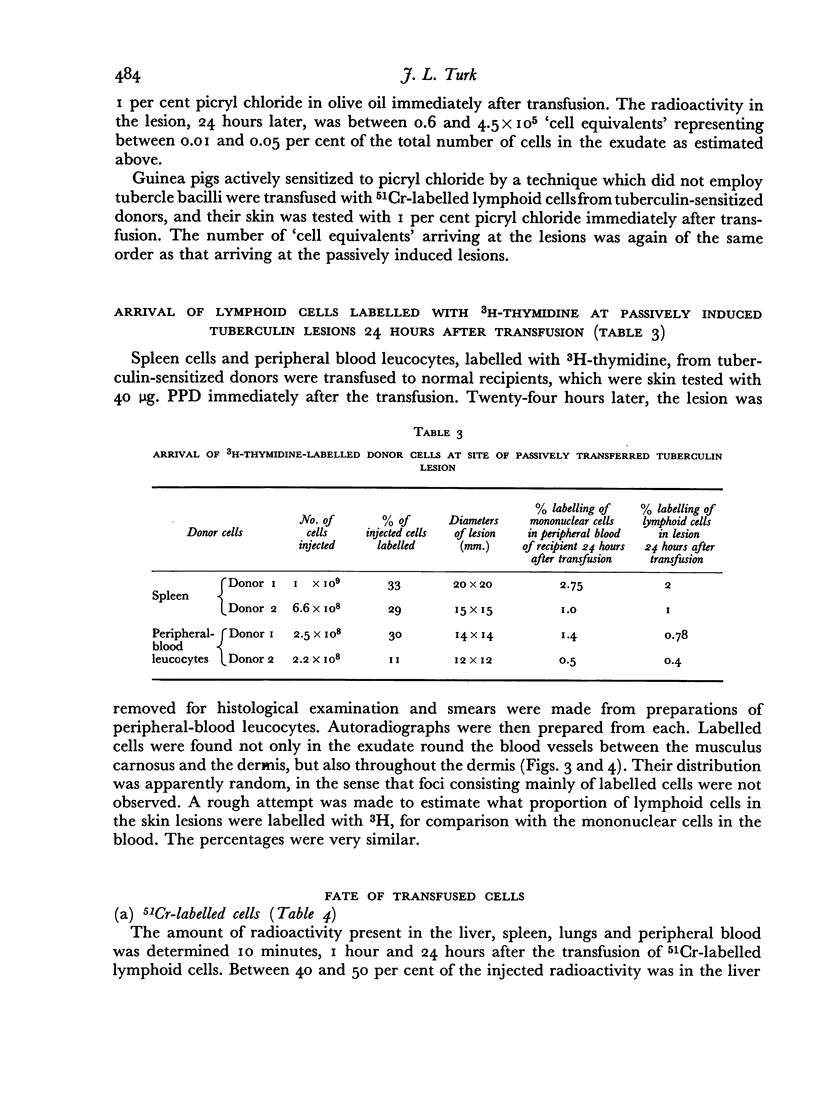
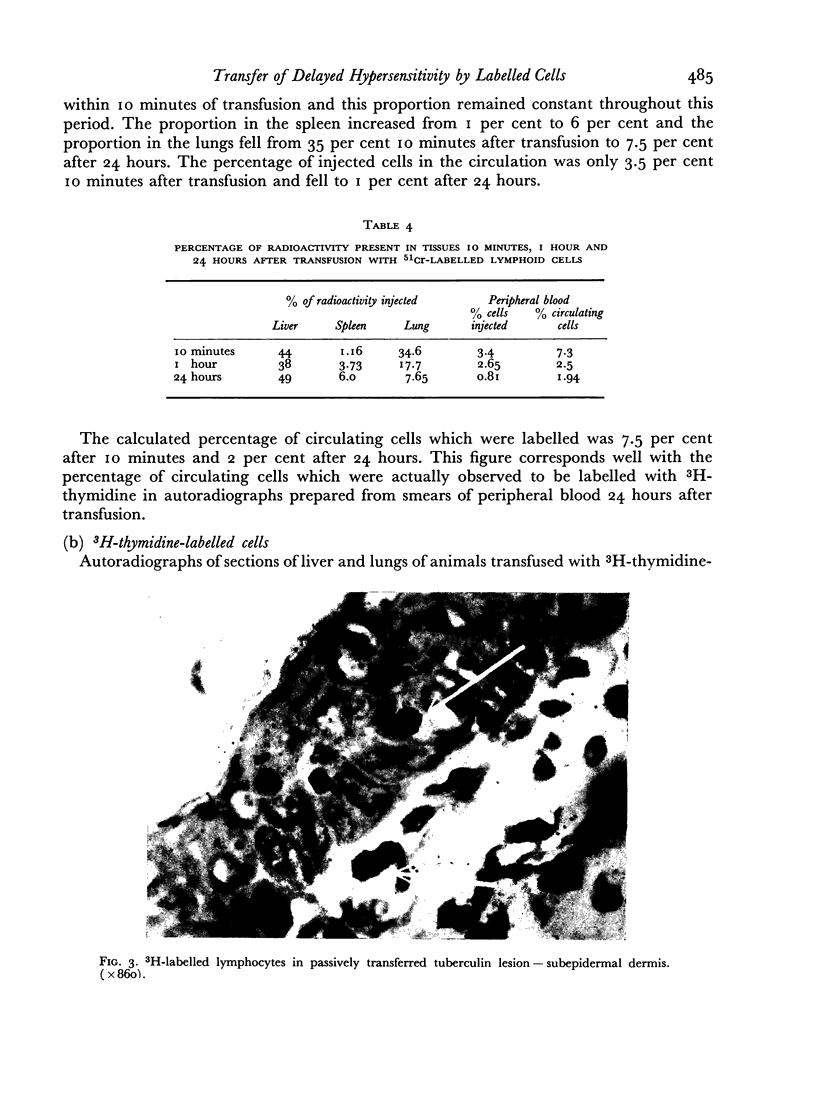
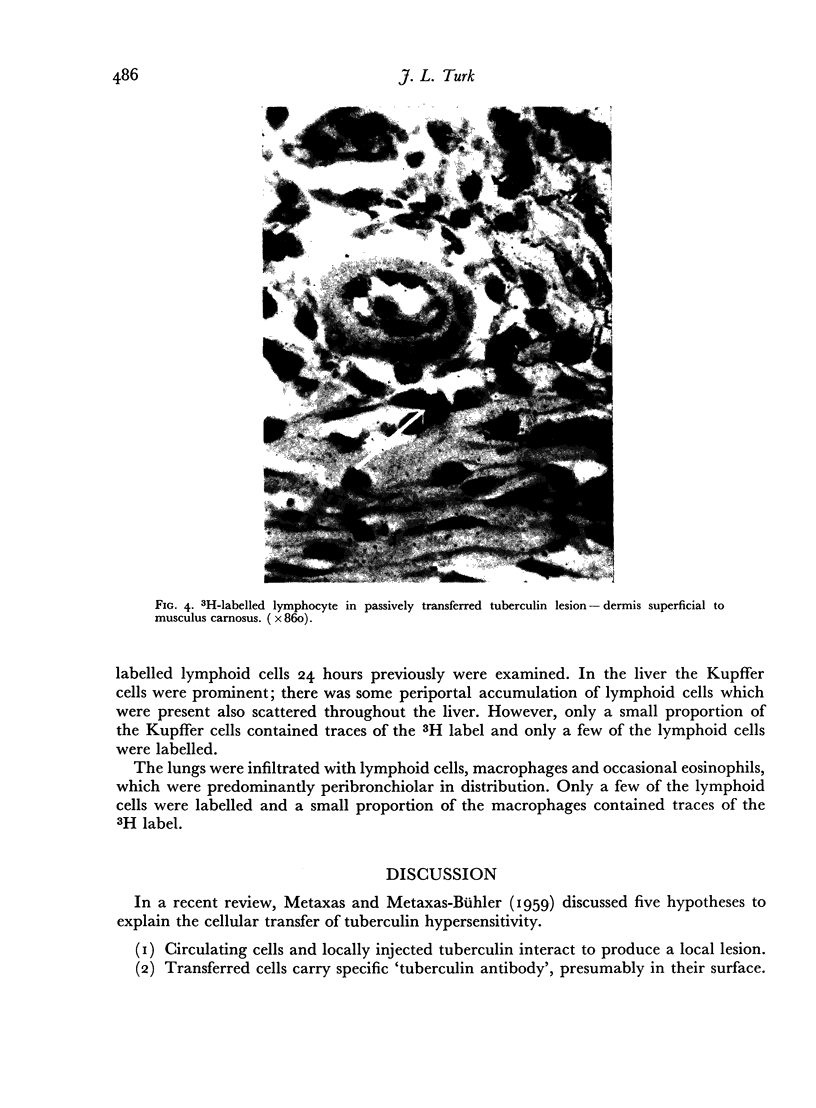
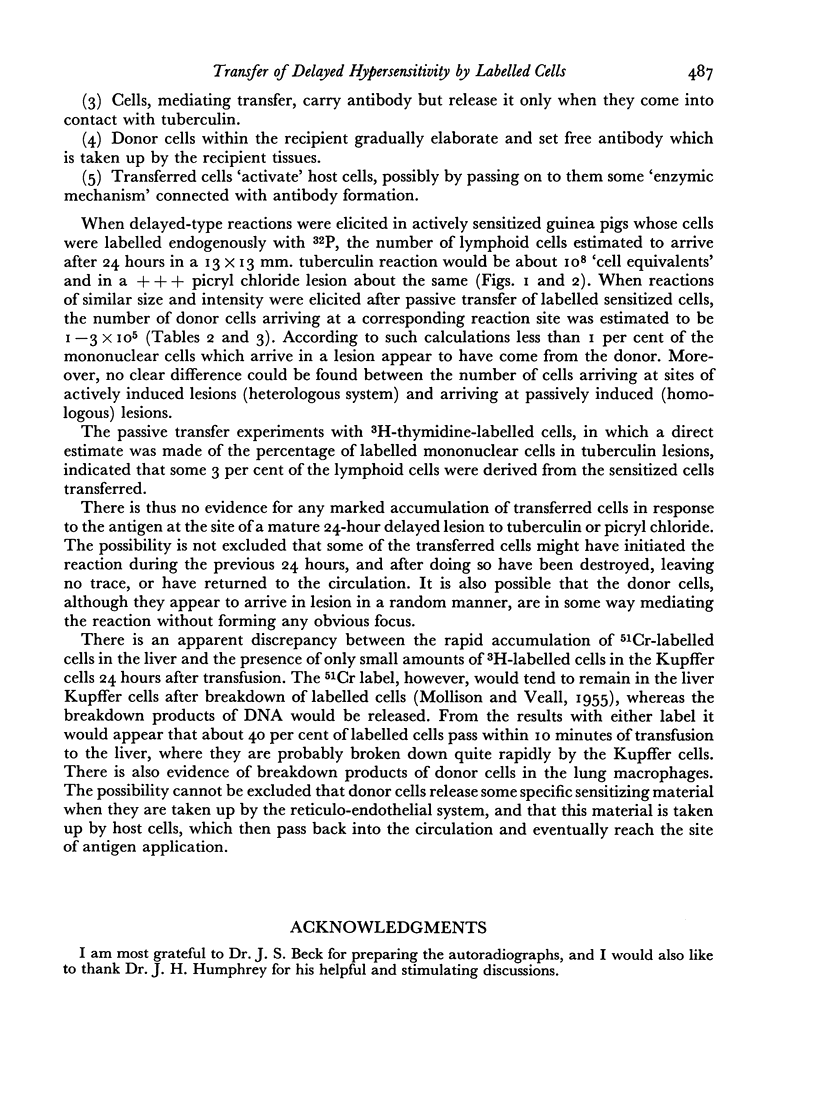
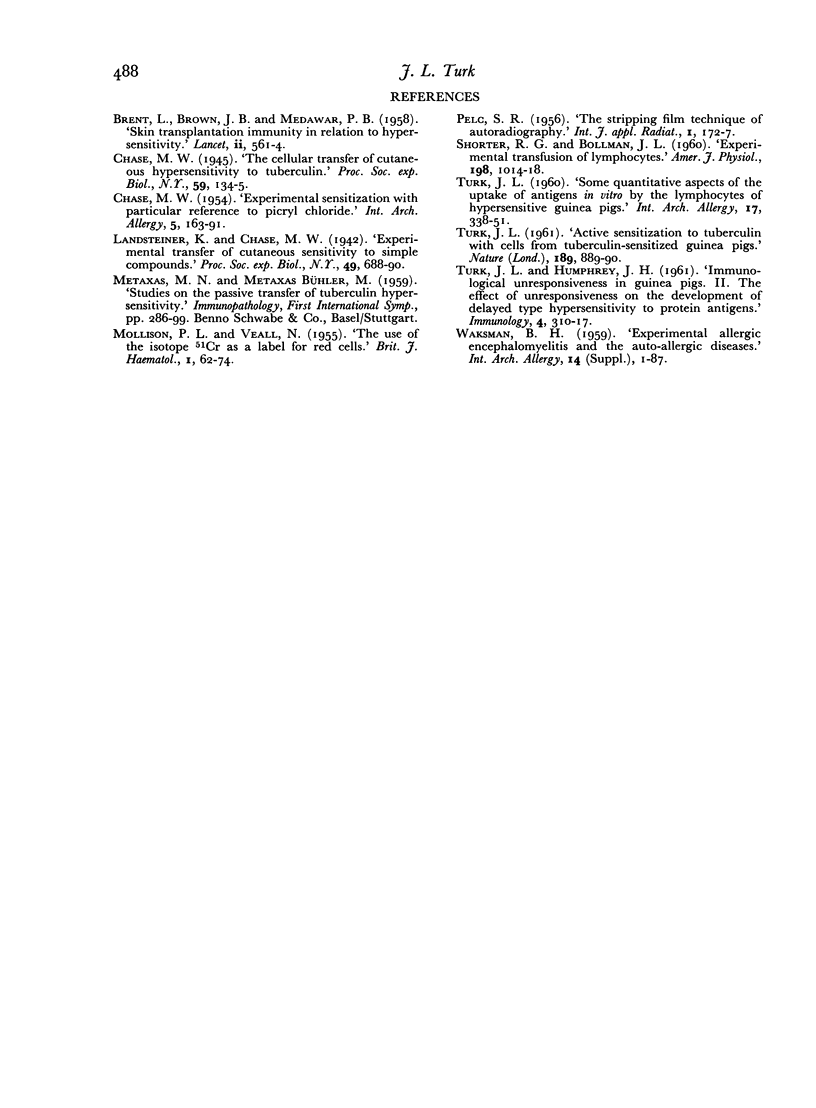
Images in this article
Selected References
These references are in PubMed. This may not be the complete list of references from this article.
- BRENT L., BROWN J., MEDAWAR P. B. Skin transplantation immunity in relation to hypersensitivity. Lancet. 1958 Sep 13;2(7046):561–564. doi: 10.1016/s0140-6736(58)90202-2. [DOI] [PubMed] [Google Scholar]
- CHASE M. W. Experimental sensitization with particular reference to picryl chloride. Int Arch Allergy Appl Immunol. 1954;5(2):163–191. doi: 10.1159/000228095. [DOI] [PubMed] [Google Scholar]
- TURK J. L. Some quantitative aspects of the uptake of antigens in vitro by the lymphocytes of hypersensitive guinea pigs. Int Arch Allergy Appl Immunol. 1960;17:338–351. doi: 10.1159/000229141. [DOI] [PubMed] [Google Scholar]




